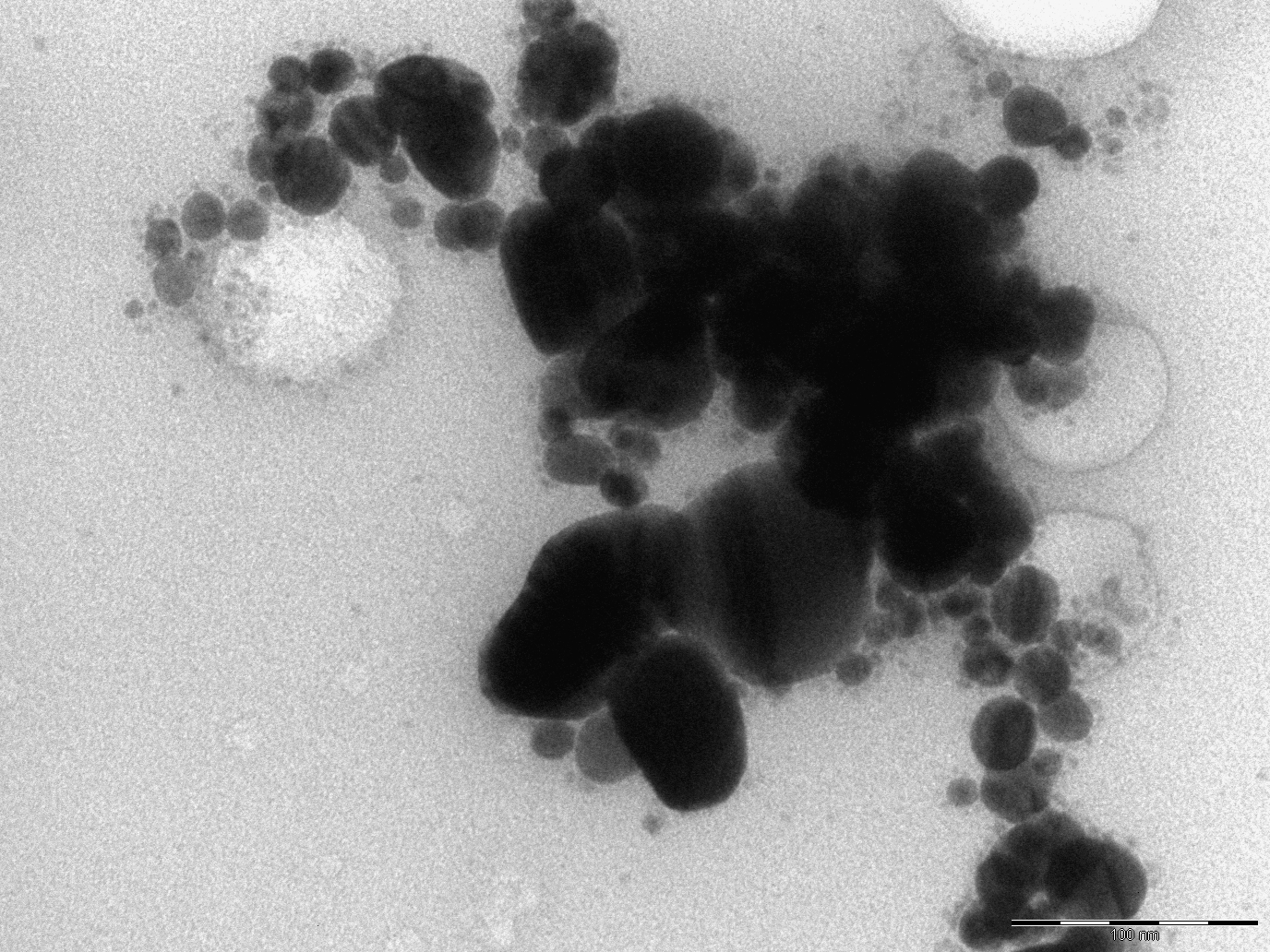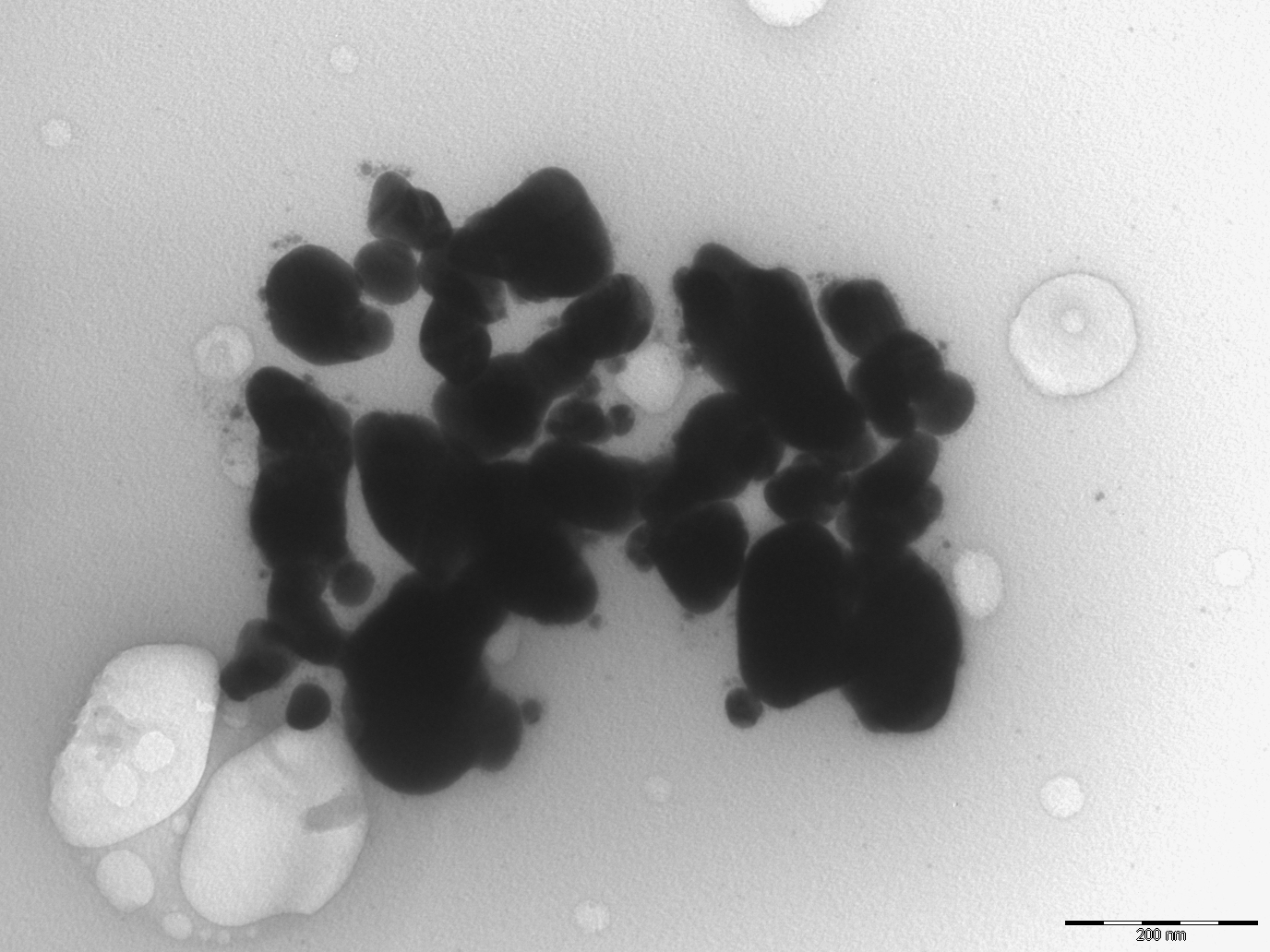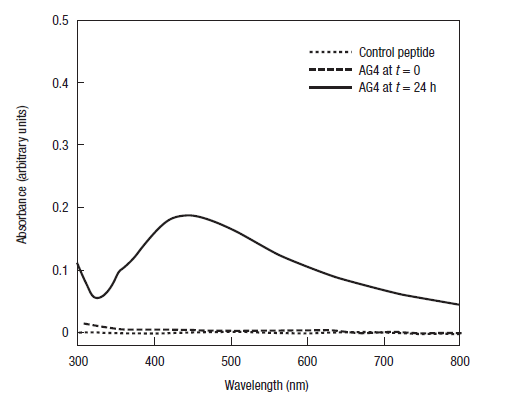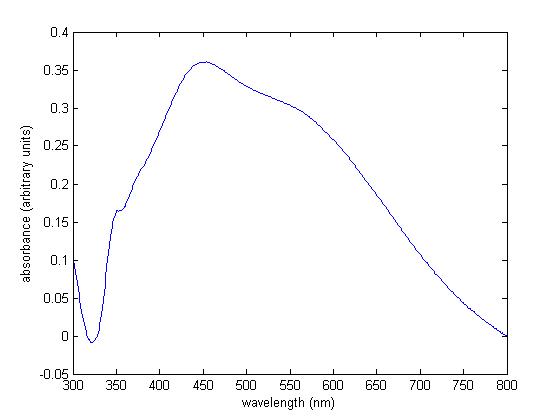Team:BIOTEC Dresden/Results SilverNano
From 2009.igem.org
(Difference between revisions)
| Line 13: | Line 13: | ||
=====Spectrophotometry===== | =====Spectrophotometry===== | ||
| + | Fig.1 shows the observed absorption spectrum for silver nanoparticles reported by Naik in doi:10.1038/nmat758. Figure 2 shows the spectrum observed from the incubated sample containing silver binding peptide, silver nitrate and sodium ascorbate. | ||
| + | |||
| + | A good agreement is observed, the deviation can be explained as a result of a different size distribution in our sample. | ||
[[Image:Silver4.jpg|350px|left|Fig.1 expected UV/Vis spectra of silver nanoparticle on Ag4]] | [[Image:Silver4.jpg|350px|left|Fig.1 expected UV/Vis spectra of silver nanoparticle on Ag4]] | ||
| Line 18: | Line 21: | ||
| + | The protocol to create silver particles works and can be combined with the gene expression in vesicles to influence the size distribution. | ||
{{:Team:BIOTEC_Dresden/NewTemplateEnd}} | {{:Team:BIOTEC_Dresden/NewTemplateEnd}} | ||
Revision as of 03:37, 22 October 2009
Silver Nano Particles - Results
Electron Microscopy
Electron micrographs of an incubated sample of silver binding peptide, with Sodium Ascorbate, Silver Nitrate, and water. Crystalline structures indicating the presence metallic particles are clearly visible.
Spectrophotometry
Fig.1 shows the observed absorption spectrum for silver nanoparticles reported by Naik in doi:10.1038/nmat758. Figure 2 shows the spectrum observed from the incubated sample containing silver binding peptide, silver nitrate and sodium ascorbate.
A good agreement is observed, the deviation can be explained as a result of a different size distribution in our sample.
The protocol to create silver particles works and can be combined with the gene expression in vesicles to influence the size distribution.
 "
"








